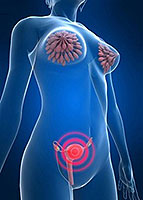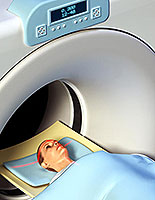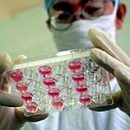Hypophise disease hyperprolactinemia, the symptoms of which manifest themselves both in women and in men, is a state with a high content of prolactin. Signs of hyperprolactinemia are more often noted in women after childbirth or abortion. The diagnosis is raised if the increase in the level of prolactin is sustained.
Content
Often
The cause of family drams due to the inability to have a child becomes
infertility, but hyperprolactine,
the symptoms of which are found in every third married couple, not
should be considered as soon as a female problem. Reduced sexual attraction
and potency, sometimes the release of milk from the chest glands, violation of sharpness and narrowing
sights, headache — All this is also manifestations of hyperprolactinemia
Men.
What leads
to raise the level of prolactin? This is a question that occurs more often from those who
touched the problem of hyperprolactinemia and family troubles arising from it and
Trouble.
Most
A frequent reason can be a disease of the hypothalamus and pituitary gland, for example,
Adenoma pituitary gland. It can be hypothyroidism — Reducing the function of the thyroid
glands, polycystic ovarian syndrome, chronic hepatic or renal
Insufficiency, brain disease, such as meningitis, encephalitis,
Tumors of various origins. A separate group of causes - provocateurs is
Some drugs: contraceptive, with a high content of estrogen,
Antidepressants.
Women with signs of hyperprolactinemia externally do not differ from healthy, but have:

- Galactere — abnormal secretion of colostrum from
missile glands outside pregnancy; - Amenorrhea or oligomenor — violation
menstrual cycle; - reduction of sexual attraction;
- Girsutism — overweight hair on male
type; - acne — inflammation of the sebaceous glands;
- A number of metabolic disorders: osteoporosis,
Obesity, hyperinsulamia.
Men with high
The level of prolactin suffer from:
-
Reduction
potency and libido; -
Gynecomastia
— The growth of the informs on the female type; -
Galactorei -
increased secretion of milk from the chest glands; -
Metabolic
violations; -
Infertility
Spermatogenesis and infertility.
Hyperprolaktemia:
Causes and features
Raising
The functional activity of the pituitary cells becomes the basis for
The emergence of hyperprolactiamia,
The causes of the disease can be:
- damage to the chest due to
injuries, burns, herpes; - anesthesia;
- breastfeeding and as a result — stimulation
nipples; - pregnancy;
- stress;
- tumors;
- neurotuberculosis;
- sarcoidosis;
- acromegaly;
- Addison disease;
- cirrhosis of the liver and renal failure;
- Incenko-Cushing syndrome;
- Reducing the activity of the thyroid gland;
- Some drugs.
IN
The clinical picture of hyperpolactinemia distinguishes the primary form of the disease,
When the main reasons for such a pathological option are, first
The queue is redundant biosynthesis prolactin in the case of adenoma or hyperfunction
pituitary, hormonal tumors, damage or inflammatory process in
Hypothalamic-pituitary system, acromegaly and Isenko-Cushing syndrome.
Secondary
The form of the disease occurs in endocrine diseases, such as syndrome
Stein-leventula, premenopausal, premenstrual and adreno-genital
Syndromes, endometriosis, uterine myoma, uncontrolled application of oral contraceptives,
Hormonal Tools, Androgen, Prostaglandinov.
Diagnosis and treatment

Diagnosis of hyperprolactiakiyia
Based on the study of the concentration of prolactin in the blood, and to determine
X-ray examination applies size and assessment of the condition of the pituitary,
MRI and KT skull area «Turkish
Sedla».
Treatment
Depending on the disease variant:
- patients with infertility and functional
hyperprolactineia; - Patients with microprolactinomes and infertility;
- patients with pituitary tumors, which
Executive treatment or X-ray irradiation in a reception complex
drugs; - Patients with secondary form
hyperprolactinemia when need treatment for the main disease.
Therapy
Hyperprolactinemia is carried out by hormonal drugs, stimulants
Dopamic receptors, as the type of additional impact, is shown ray
therapy. Surgical intervention is carried out more often on the basis of
Recommendations of the ophthalmologist with a significant impairment of vision.









